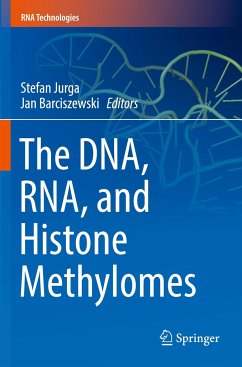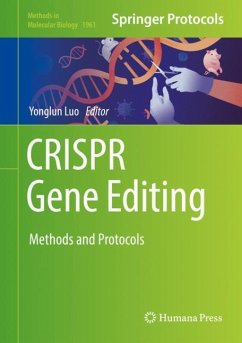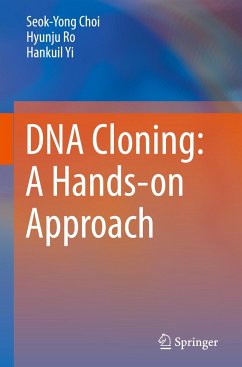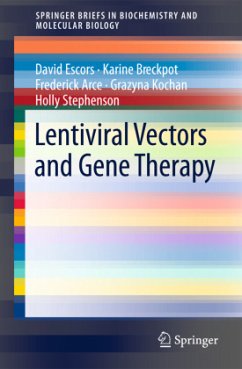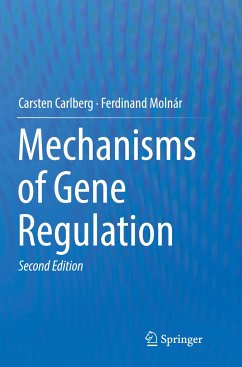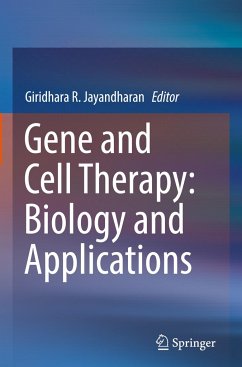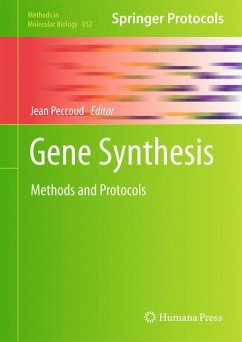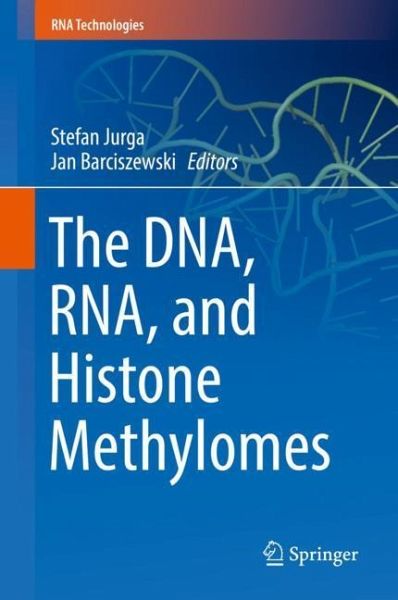
The DNA, RNA, and Histone Methylomes

PAYBACK Punkte
65 °P sammeln!
This book reviews the chemical, regulatory, and physiological mechanisms of protein arginine and lysine methyltransferases, as well as nucleic acid methylations and methylating enzymes. Protein and nucleic acid methylation play key and diverse roles in cellular signalling and regulating macromolecular cell functions.Protein arginine and lysine methyltransferases are the predominant enzymes that catalyse S-adenosylmethionine (SAM)-dependent methylation of protein substrates. These enzymes catalyse a nucleophilic substitution of a methyl group to an arginine or lysine side chain nitrogen (N) ato...
This book reviews the chemical, regulatory, and physiological mechanisms of protein arginine and lysine methyltransferases, as well as nucleic acid methylations and methylating enzymes. Protein and nucleic acid methylation play key and diverse roles in cellular signalling and regulating macromolecular cell functions.
Protein arginine and lysine methyltransferases are the predominant enzymes that catalyse S-adenosylmethionine (SAM)-dependent methylation of protein substrates. These enzymes catalyse a nucleophilic substitution of a methyl group to an arginine or lysine side chain nitrogen (N) atom. Cells also have additional protein methyltransferases, which target other amino acids in peptidyl side chains or N-termini and C-termini, such as glutamate, glutamine, and histidine. All these protein methyltransferases use a similar mechanism. In contrast, nucleic acids (DNA and RNA) are substrates for methylating enzymes, which employ various chemical mechanisms to methylatenucleosides at nitrogen (N), oxygen (O), and carbon (C) atoms.
This book illustrates how, thanks to there ability to expand their repertoire of functions to the modified substrates, protein and nucleic acid methylation processes play a key role in cells.
Protein arginine and lysine methyltransferases are the predominant enzymes that catalyse S-adenosylmethionine (SAM)-dependent methylation of protein substrates. These enzymes catalyse a nucleophilic substitution of a methyl group to an arginine or lysine side chain nitrogen (N) atom. Cells also have additional protein methyltransferases, which target other amino acids in peptidyl side chains or N-termini and C-termini, such as glutamate, glutamine, and histidine. All these protein methyltransferases use a similar mechanism. In contrast, nucleic acids (DNA and RNA) are substrates for methylating enzymes, which employ various chemical mechanisms to methylatenucleosides at nitrogen (N), oxygen (O), and carbon (C) atoms.
This book illustrates how, thanks to there ability to expand their repertoire of functions to the modified substrates, protein and nucleic acid methylation processes play a key role in cells.



